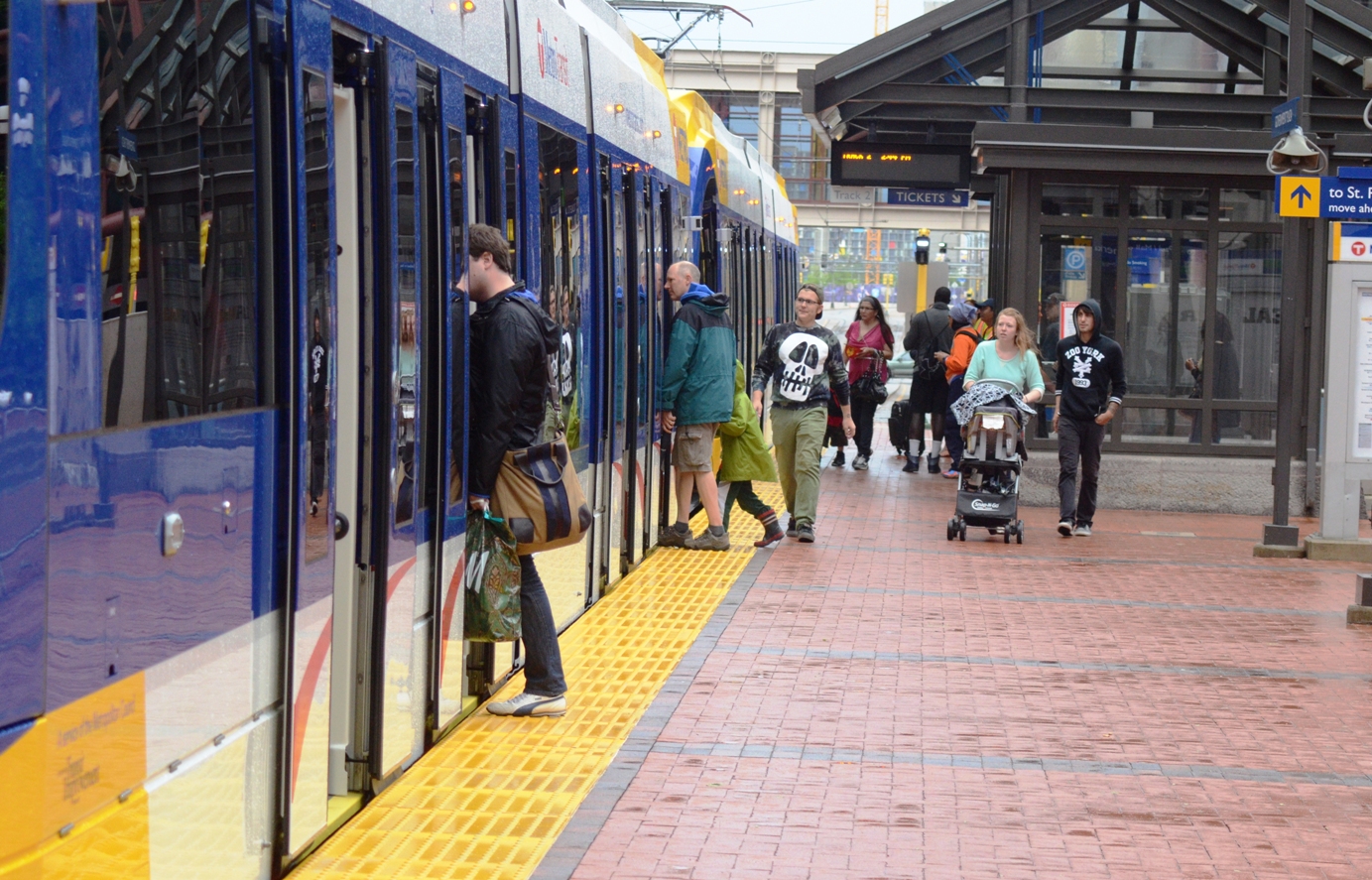 With tens of thousands of customers boarding light-rail trains on the METRO Green and Blue lines every day, it’s reasonable to wonder just how Metro Transit keeps track of all those rides.
With tens of thousands of customers boarding light-rail trains on the METRO Green and Blue lines every day, it’s reasonable to wonder just how Metro Transit keeps track of all those rides.
The answer: Automatic Passenger Counters, or APCs.
Commonly used by transit agencies to track passenger boardings, APCs rely on advanced, overhead sensors inside the train to measure movements into and out of light-rail cars.
Metro Transit began installing APC technology on its newest Siemens trains last year and the technology will be on all 59 of these trains by the end of the year. Since some Siemens trains and the older Bombardier trains don’t yet have verified APC technology, numbers from APC-equipped trains are used to estimate total ridership. (The average number of rides counted on an APC-equipped train is multiplied by the average number of cars that ran on each trip for the day, and by the total number of trips on that day.)
Before Metro Transit used APCs, light rail ridership estimates were based on manual counts. APC technology has evolved since the Blue Line’s opening a decade ago and is more commonly used now because data can be collected more efficiently and is more quickly available.
While APCs are now being used, manual counts will continue to play a role in calculating ridership. Before a train with an APC is used in ridership calculations, its results are compared to manual counts to verify that they are consistent. Testing done by internal auditors in 2014 found the manual and APC counts were virtually identical.
Fare payments are not used to track light-rail ridership because not all valid fare payments are electronically recorded. Many customers – more than 70,000 at the end of 2014 – use pre-paid fare cards like Metropass, College Pass, Student Pass and U-Pass. Though these customers are asked to swipe their cards at fare readers, that doesn’t always happen. Transfer slips that cash-paying customers receive on the bus are also not recorded by ticket validators on light-rail platforms.
Still, the number of non-fare paying customers on light rail remains low. In 2014, Metro Transit police officers conducted more than 1.4 million fare inspections on the Green and Blue Lines and the compliance rate on each line was in excess of 99 percent.
Fare payments are used to track bus ridership, since a customer must pay each time they board (free rides provided to eligible customers or for marketing purposes are manually recorded). Northstar ridership is also based on fare payments, since nearly all customers must make an electronic payment before boarding.
Like the METRO Red Line, future Bus Rapid Transit lines like the A Line and Orange Line will use APCs to count ridership. APCs are used on BRT because these lines will also use off-board fare payment technology.
> The proof is in the payment
> Good Question: Why offer transfers?
Have a “Good Question” that you want answered? Email it to goodquestion@metrotransit.org.